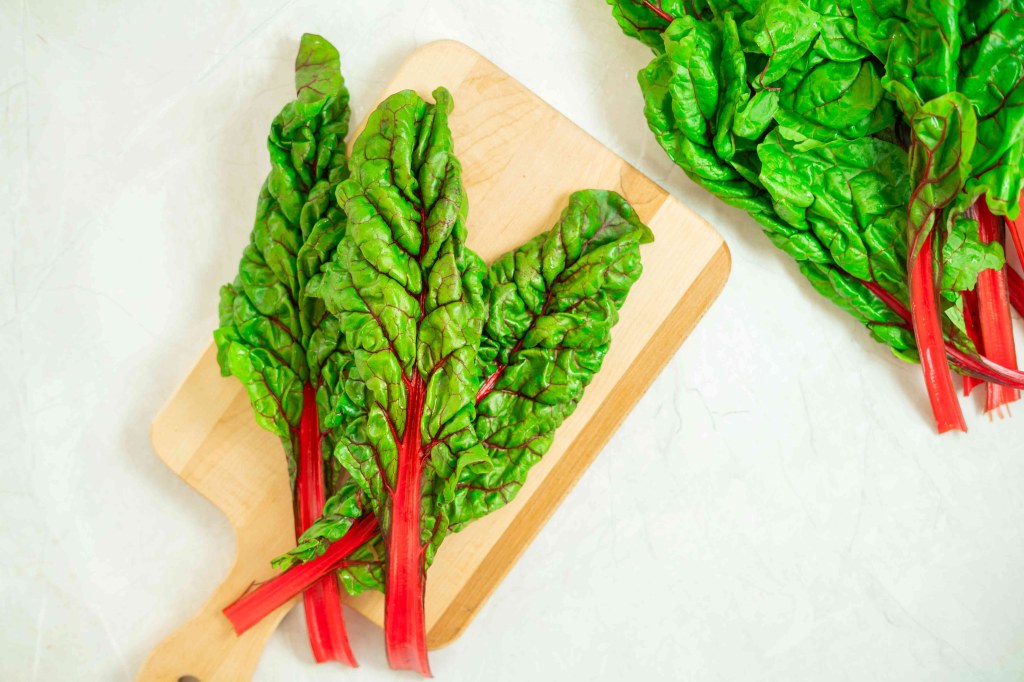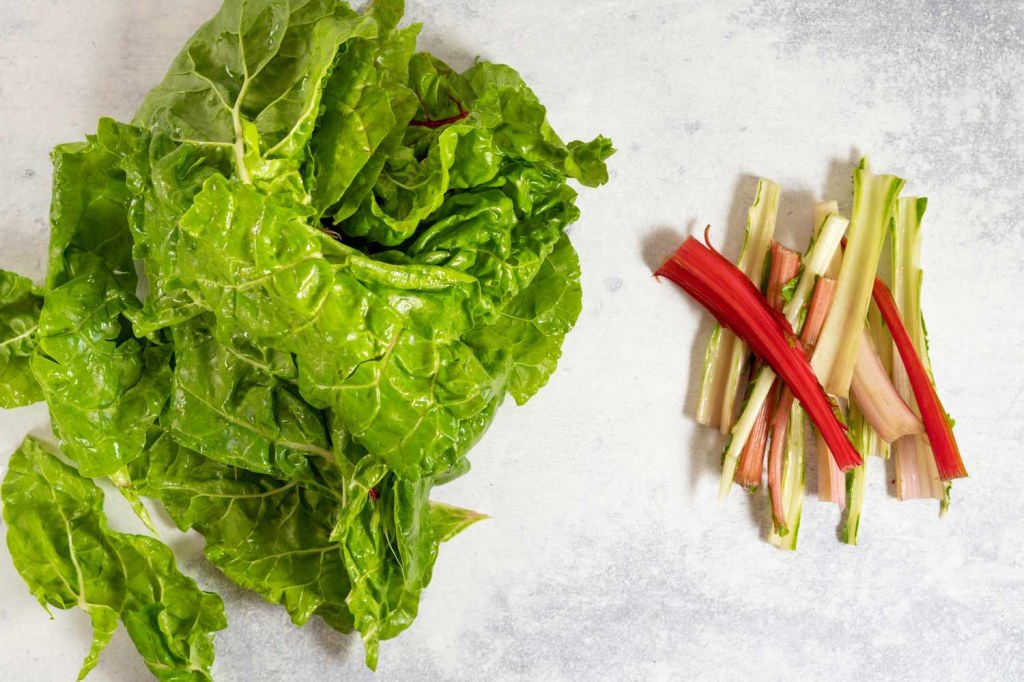Unlock The Secret To Preserving Swiss Chard: Keep Your Greens Fresh For Longer!
Preserve Swiss Chard: A Nutritious and Versatile Green
Greetings, Swiss Enthusiast! Are you a fan of Swiss chard? This leafy green vegetable is not only delicious but also packed with nutrients. In this article, we will explore the various methods to preserve Swiss chard, ensuring that you can enjoy its goodness all year round. So, let’s dive in!
Introduction
3 Picture Gallery: Unlock The Secret To Preserving Swiss Chard: Keep Your Greens Fresh For Longer!



Swiss chard, also known as silverbeet or spinach beet, is a leafy green vegetable that belongs to the same family as beets and spinach. With its vibrant colors and earthy flavor, it has become a popular choice among health-conscious individuals and culinary enthusiasts alike. However, Swiss chard is a seasonal vegetable, and its availability may be limited during certain times of the year. To overcome this limitation, preserving Swiss chard becomes essential.
Preserving Swiss chard not only allows you to enjoy it in various dishes throughout the year but also helps to retain its nutritional value. Swiss chard is an excellent source of essential vitamins, minerals, and antioxidants. It is rich in vitamins A, C, and K, as well as magnesium, potassium, and iron. Additionally, it contains beneficial plant compounds like betalains, which have been shown to have anti-inflammatory and antioxidant properties.

Image Source: naturemoms.com
Now, let’s delve into the different methods of preserving Swiss chard and discover how you can make the most of this versatile vegetable!
Methods of Preserving Swiss Chard
1. Freezing Swiss Chard
Freezing Swiss chard is a simple and effective way to preserve its freshness and nutritional value. Start by washing the leaves thoroughly and blanching them in boiling water for a few minutes. Then, transfer the blanched chard to ice water to stop the cooking process. Once cooled, pat the leaves dry, and pack them into airtight containers or freezer bags. Label and date the containers before placing them in the freezer.
2. Canning Swiss Chard

Image Source: thespruce.com
Canning Swiss chard allows you to enjoy this leafy green even when it’s out of season. To can Swiss chard, begin by washing and blanching the leaves as mentioned earlier. Pack the blanched chard tightly into sterilized jars, leaving a 1-inch headspace. Prepare a brine solution by combining water, vinegar, salt, and sugar, and bring it to a boil. Pour the hot brine over the chard, ensuring that it covers the leaves completely. Finally, seal the jars and process them in a hot water bath according to canning guidelines.
3. Dehydrating Swiss Chard
Dehydrating Swiss chard is an excellent option for those who prefer a more compact and shelf-stable form of preservation. Begin by washing and drying the leaves thoroughly. Remove the stems and tear the chard into smaller pieces. Arrange the pieces in a single layer on dehydrator trays or baking sheets. Set the dehydrator to a low temperature or place the trays in an oven set to the lowest temperature. Allow the chard to dehydrate until crisp. Once fully dried, store the chard in airtight containers away from moisture and light.
4. Pickling Swiss Chard

Image Source: thespruce.com
Pickling Swiss chard adds a tangy and flavorful twist to this nutritious green. Start by washing and cutting the chard into bite-sized pieces. In a saucepan, combine vinegar, water, salt, sugar, and your favorite pickling spices. Bring the mixture to a boil and simmer for a few minutes. Pack the chard tightly into sterilized jars and pour the hot pickling liquid over the chard, leaving a 1/2-inch headspace. Seal the jars and process them in a water bath canner for the recommended time.
5. Fermenting Swiss Chard
Fermenting Swiss chard not only preserves it but also enhances its nutritional profile by introducing beneficial probiotics. To ferment Swiss chard, wash and chop the leaves into bite-sized pieces. In a bowl, mix the chard with salt and massage it gently to release its juices. Transfer the chard to a clean glass jar, pressing it down firmly to eliminate any air pockets. Ensure that the chard is fully submerged in its own liquid. Cover the jar with a fermentation lid or a cloth secured with a rubber band. Allow the chard to ferment at room temperature for a few days or until desired tanginess is achieved. Once fermented, store the jar in the refrigerator.
What is Swiss Chard?
Swiss chard, scientifically known as Beta vulgaris subsp. cicla, is a leafy green vegetable with vibrant stalks ranging in colors from white and yellow to red and purple. The leaves are broad and have a slightly crinkled texture. Swiss chard is native to the Mediterranean region and has been cultivated for centuries. It is known for its mild, earthy flavor, which is similar to spinach or beet greens.
Who Can Benefit from Preserving Swiss Chard?
Preserving Swiss chard is beneficial for anyone who loves this nutrient-dense vegetable and wants to enjoy it year-round. Whether you are a home cook, a health enthusiast, or someone looking to incorporate more greens into your diet, preserving Swiss chard ensures that you always have access to this versatile ingredient.
When is the Best Time to Preserve Swiss Chard?
The best time to preserve Swiss chard is when it’s in season and at its peak freshness. Typically, Swiss chard thrives in cooler weather and is available from late spring through fall. Harvesting the leaves at their peak ensures that they contain the highest nutritional content. However, with the various preservation methods mentioned earlier, you can extend the shelf life of Swiss chard and enjoy it even when it’s not in season.
Where Can You Find Swiss Chard?
Swiss chard is widely available in grocery stores, farmers markets, and even in some home gardens. Look for vibrant, crisp leaves with no signs of wilting or discoloration. If you prefer organic produce, check for organic Swiss chard options at your local farmers market or natural food store.
Why Should You Preserve Swiss Chard?
Preserving Swiss chard allows you to make the most of this nutritious green and enjoy its benefits throughout the year. By preserving Swiss chard, you can avoid wastage and ensure that none of its valuable nutrients go to waste. Additionally, having preserved Swiss chard on hand makes it easier to incorporate this leafy green into a variety of dishes, adding both flavor and nutritional value to your meals.
How to Preserve Swiss Chard
Preserving Swiss chard can be done through various methods, such as freezing, canning, dehydrating, pickling, and fermenting. Each method offers a different way to preserve the vegetable while retaining its taste and nutritional value. Choose the preservation method that suits your preferences and culinary needs, and follow the step-by-step instructions provided earlier in this article.
Advantages and Disadvantages of Preserving Swiss Chard
Advantages
1. Availability: Preserving Swiss chard ensures that you have access to this nutritious vegetable year-round, even when it’s out of season.
2. Nutritional Value: By preserving Swiss chard, you can retain its essential vitamins, minerals, and antioxidants, allowing you to enjoy its health benefits whenever you desire.
3. Versatility: Preserved Swiss chard can be used in a variety of dishes, including soups, stews, salads, and side dishes, adding flavor, texture, and nutritional value.
4. Convenience: Having preserved Swiss chard on hand saves time and effort, as you don’t need to visit the store every time you want to cook with this leafy green.
5. Reduced Food Waste: Preserving Swiss chard helps reduce food waste by utilizing excess produce and ensuring that it doesn’t spoil or go unused.
Disadvantages
1. Texture Changes: Depending on the preservation method used, the texture of Swiss chard may change slightly. For example, freezing may cause the leaves to become softer or wilted when thawed.
2. Flavor Variations: Some preservation methods, such as pickling and fermenting, introduce additional flavors to Swiss chard. While this can be desirable for some, it may not suit everyone’s taste preferences.
3. Shelf Space: Storing preserved Swiss chard requires space in your pantry, freezer, or refrigerator, which may be limited for some individuals.
4. Preparation Time: Preserving Swiss chard requires some preparation time, including washing, blanching, packing, and processing. This may be a drawback for those looking for quick and convenient options.
5. Equipment and Supplies: Certain preservation methods, such as canning and dehydrating, require specific equipment and supplies, which may not be readily available for everyone.
Frequently Asked Questions (FAQ)
1. Can I preserve Swiss chard without blanching it first?
Blanching Swiss chard before preserving helps retain its color, texture, and nutritional value. While it is possible to skip the blanching step, the quality of the preserved Swiss chard may be compromised.
2. How long can I store frozen Swiss chard?
Frozen Swiss chard can be stored for up to 12 months. However, for the best quality, it is recommended to consume it within 8 to 10 months.
3. Can I pickle Swiss chard with other vegetables?
Absolutely! Pickling Swiss chard with other vegetables, such as carrots, cucumbers, or onions, can create a delicious medley of flavors. Feel free to experiment with different combinations and spices.
4. Are there any safety precautions to follow when canning Swiss chard?
When canning Swiss chard, it is essential to follow proper canning guidelines to ensure food safety. This includes using sterilized jars, following recommended processing times, and checking for a proper seal on the jars.
5. Can I dehydrate Swiss chard in the sun?
While it is possible to dehydrate Swiss chard in the sun, it is not recommended due to the risk of contamination and inconsistent drying. It is best to use a dehydrator or oven set to a low temperature for safe and reliable results.
Conclusion
In conclusion, preserving Swiss chard allows you to enjoy this nutritious and versatile green throughout the year. Whether you choose to freeze, can, dehydrate, pickle, or ferment Swiss chard, each method offers a unique way to preserve its freshness and nutritional value. By preserving Swiss chard, you can ensure that you always have access to this vibrant and nutrient-dense vegetable, adding flavor, color, and health benefits to your meals. So, don’t let Swiss chard’s seasonal availability limit your culinary adventures. Preserve it and savor its goodness in every season!
Final Remarks
Preserving Swiss chard not only extends its shelf life but also adds variety to your meals and reduces food waste. Remember to always follow proper preservation techniques to ensure the safety and quality of the preserved Swiss chard. Whether you choose to freeze, can, dehydrate, pickle, or ferment Swiss chard, enjoy the benefits of this nutritious and versatile green in all its preserved forms. Happy preserving and bon appétit!
This post topic: Swiss


